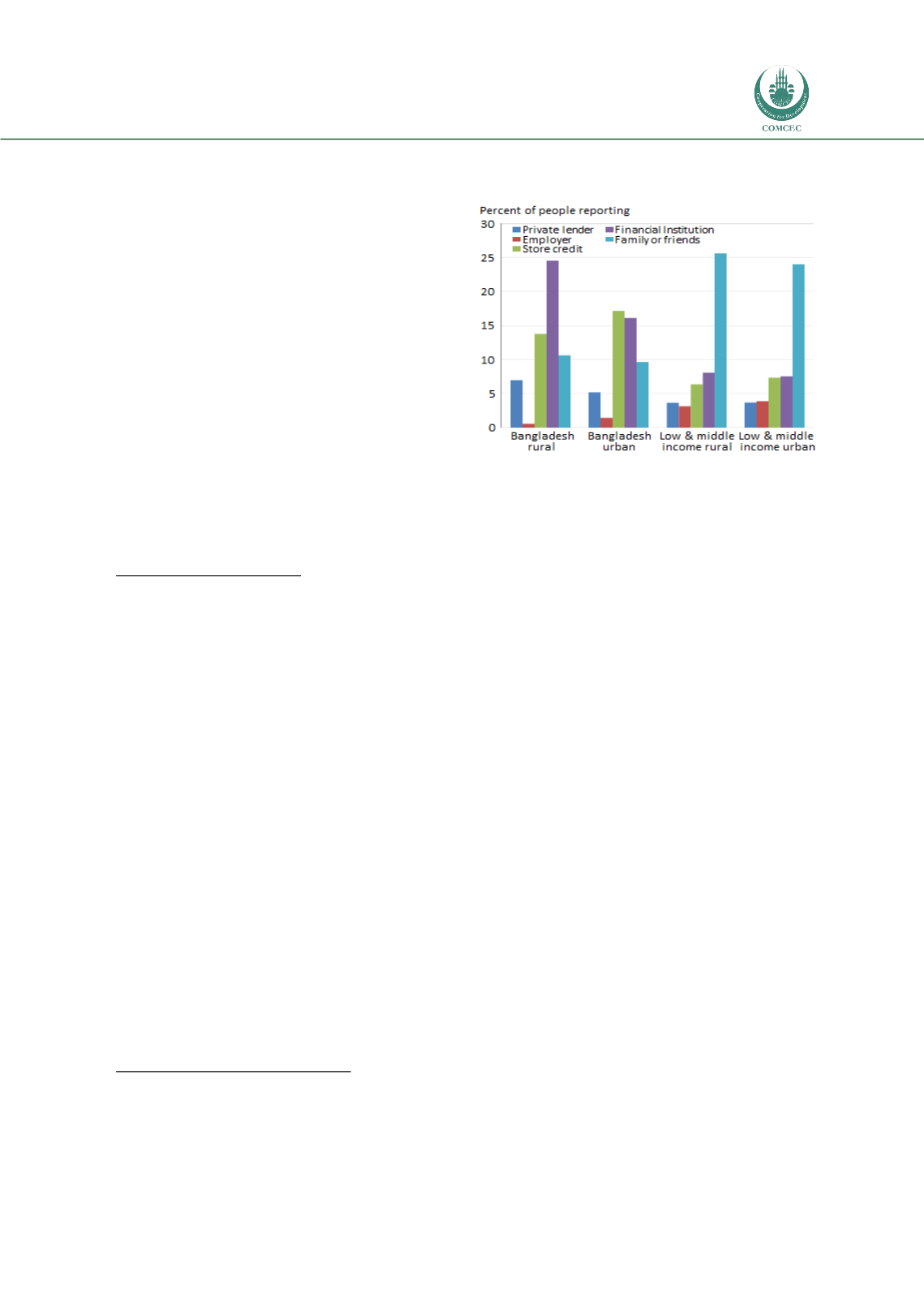

Facilitating Smallholder Farmers’ Market Access
In the OIC Member Countries
63
These levels of access to loans and
formal financial institutions are
comparable to averages across low-
and middle-income countries.
As seen in
Figure 34,reliance on
formal
financial
institutions
is
relatively
high
in
Bangladesh
compared to averages for low- and
middle-income
countries.
Interestingly, rural residents are more
likely to obtain credit from a formal
financial institution than urban
residents. Levels of borrowing from
formal financial institutions and
access to store credit in Bangladesh
significantly exceed the averages for these measures across all low- and middle-income
countries.
F
OOD SAFETY AND QUALITY
Ensuring food quality and safety remains a significant uphill battle in Bangladesh. The
country’s food safety legislation was revised and updated recently, but a concerted effort
is needed to enforce the law and make the corresponding upgrades in infrastructure. A
number of food safety risks are commonly acknowledged in Bangladesh. They include
microbiological contamination in the production and post-harvest handling systems for
fruit and vegetables, as well as chemical contamination of food products—particularly
pesticide contamination in fruit and vegetables, but also chemical contamination in fish
and fish products.
127
Another food safety risk is heavy metal contamination, especially
high levels of arsenic, lead, and cadmium in vegetables and possibly in fish and fish
products. Antibiotic residues in fish and fish products, the use of illegal additives and
colorants, and adulteration of various food products present additional risks.
128
One way of assessing the quality of a country’s domestic food systems is to look at how
well its exported food products comply with import standards. Bangladesh has exhibited
relatively poor compliance. Between 2002 and 2008, the most common reasons for
rejecting food and feed imported into the EU from Bangladesh included veterinary drug
residues (specifically, residues of antibiotics used in aquaculture, notably shrimp
production), microbiological contaminants, substandard product composition, and
mycotoxins.
129
The relative rejection rate for Bangladeshi products imported into the EU
was high across all categories for which data were reported (fish and fisheries products,
fruit and vegetables, nuts and seeds, and herbs and spices). Rejection rates for Bangladeshi
127
The use of formaldehyde to preserve fish apparently is widespread. Rice millers also reportedly use
urea to whiten rice.
128
World Bank (2008).
129
UNIDO, NORAD AND IDS. (2010).
FIGURE 34: CREDIT SOURCES IN RURAL AND URBAN
BANGLADESH AND LOW- AND MIDDLE-INCOME COUNTRIES
Source:
Global Findex (World Bank 2014c).

















